Your cart is currently empty!

Taking the guesswork out of Greek cooking…one cup at a time
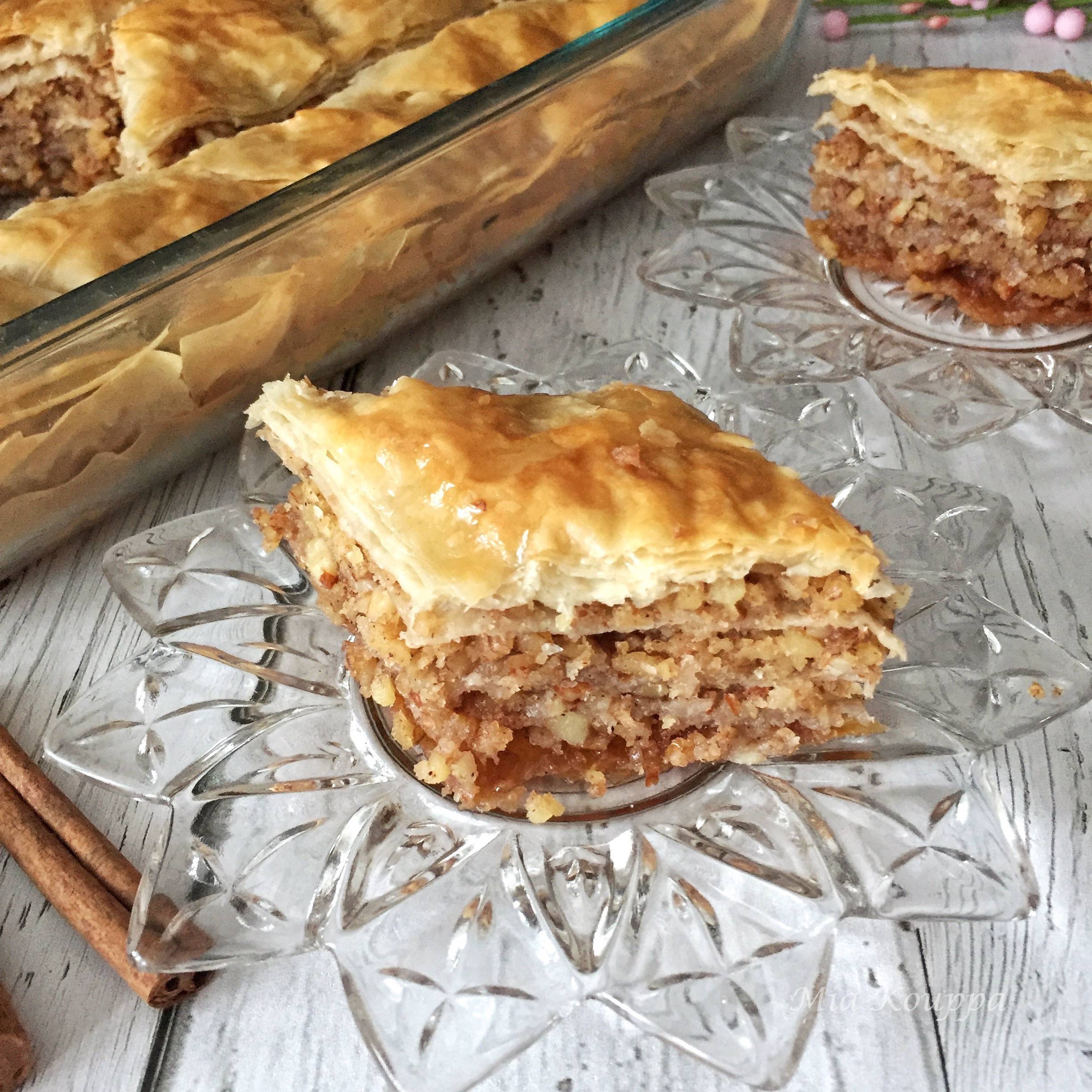
Baklava is a classic Greek syrupy dessert made with layers of crispy phyllo and lots of nuts!
Before our Mia Kouppa launch about 7 months ago, we established a few goals and rules to keep us focused, and on track. Our goals included increasing our reach (that’s blog speak for people seeing our stuff) every week, learning all about Tweeting and Pinning, and being invited to appear on Ellen. Some goals are clearly more attainable than others. As for the rules, we decided that we would post twice a week (Mondays and Thursdays), not talk about our blog incessantly to friends, family and strangers, and never use the descriptors “THE BEST ever”, “THE MOST delicious”, “THE WORLD’S greatest”, in reference to any recipes we shared. How could we make such bold assertions? We are not that worldly…but baklava is!
Baklava is one of the most popular and delicious Greek desserts, and it is also an international favourite; there are variations of this sweet treat in many middle Eastern and European countries. Lucky for us (and you), baklava may be the easiest dessert you will ever make. Truly, there is actually no way you can mess this up. Even if you tried, we don’t think you could ruin it. It is impervious to destruction. It is less baking and more assembling. If you were really committed, we suppose you could burn it, but then you might burn down your whole kitchen, and we don’t think it is worth it, just to prove us wrong.
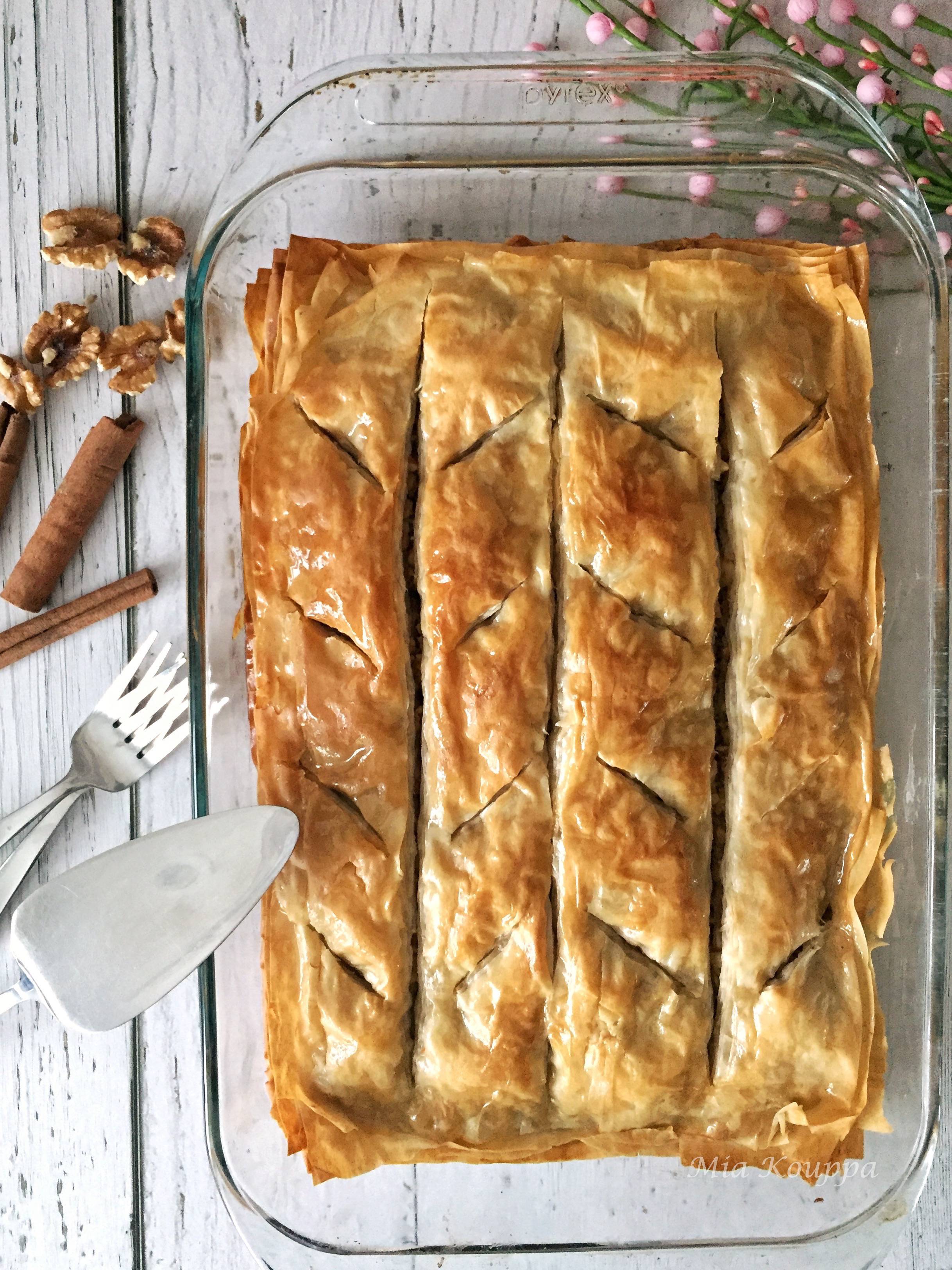
Given the many, many variations of baklava out there, and our pre-established rules, we’re not going to tell you that our parents’ baklava recipe is the best you will every find. We will not claim that this will be the best baklava you will ever eat. But we can, with confidence, tell you that this is the absolute best baklava WE have ever eaten; and we have tried many (for research purposes, of course). Our parents make a baklava which is sweet, but not overly syrupy. They use a mixture of walnuts and almonds to give great flavour and texture. They also include an unexpected ingredient which, according to them, is essential. Yet still, we wouldn’t dream of proclaiming that this is the world’s best recipe. There is no rule however, about other people claiming this to be THE BEST BAKLAVA EVER…so go ahead. We won’t mind.
Helpful hints
Phyllo dough (sometimes referred to as filo dough) has a bad reputation as being a finicky ingredient which is difficult to work with. Many recipes warn against the fact that it dries out quickly, tears easily and should therefore be handled with extreme caution. We say, hogwash! Sure, phyllo can dry up when exposed to air for a long time…but it has to be a pretty long time, longer than it will take for you to prepare this dessert, even for the first time. To help avoid the horror of dried phyllo however you can always cover, with a clean cloth, the phyllo you are not yet working with. And yes, it tears…but you know what…who cares? You will have to use several layers of phyllo dough in this dessert. If you have a few tears, no one will notice and it won’t affect your end product in the least. Just try to make sure that your top-most layers remain intact, for pretty purposes.
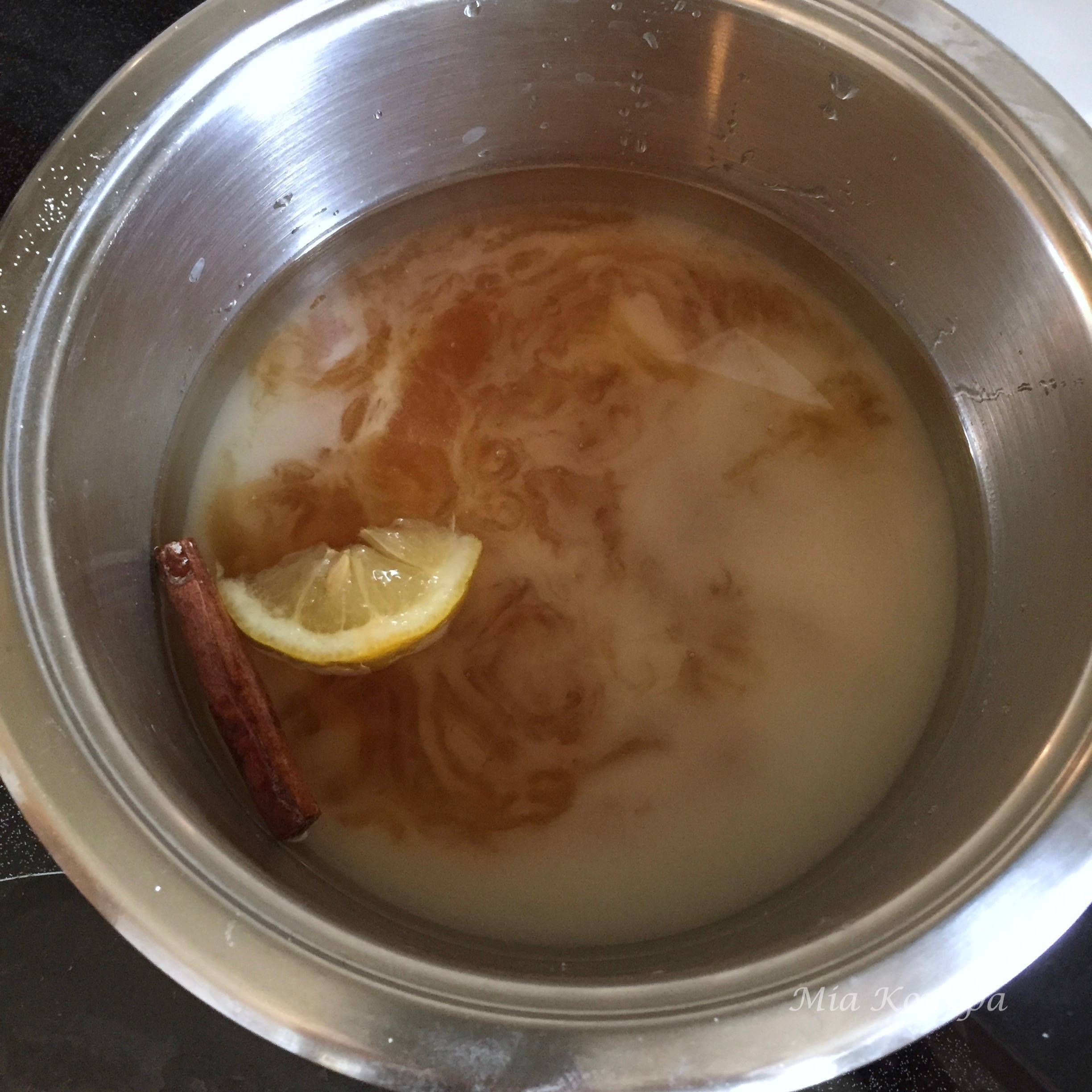
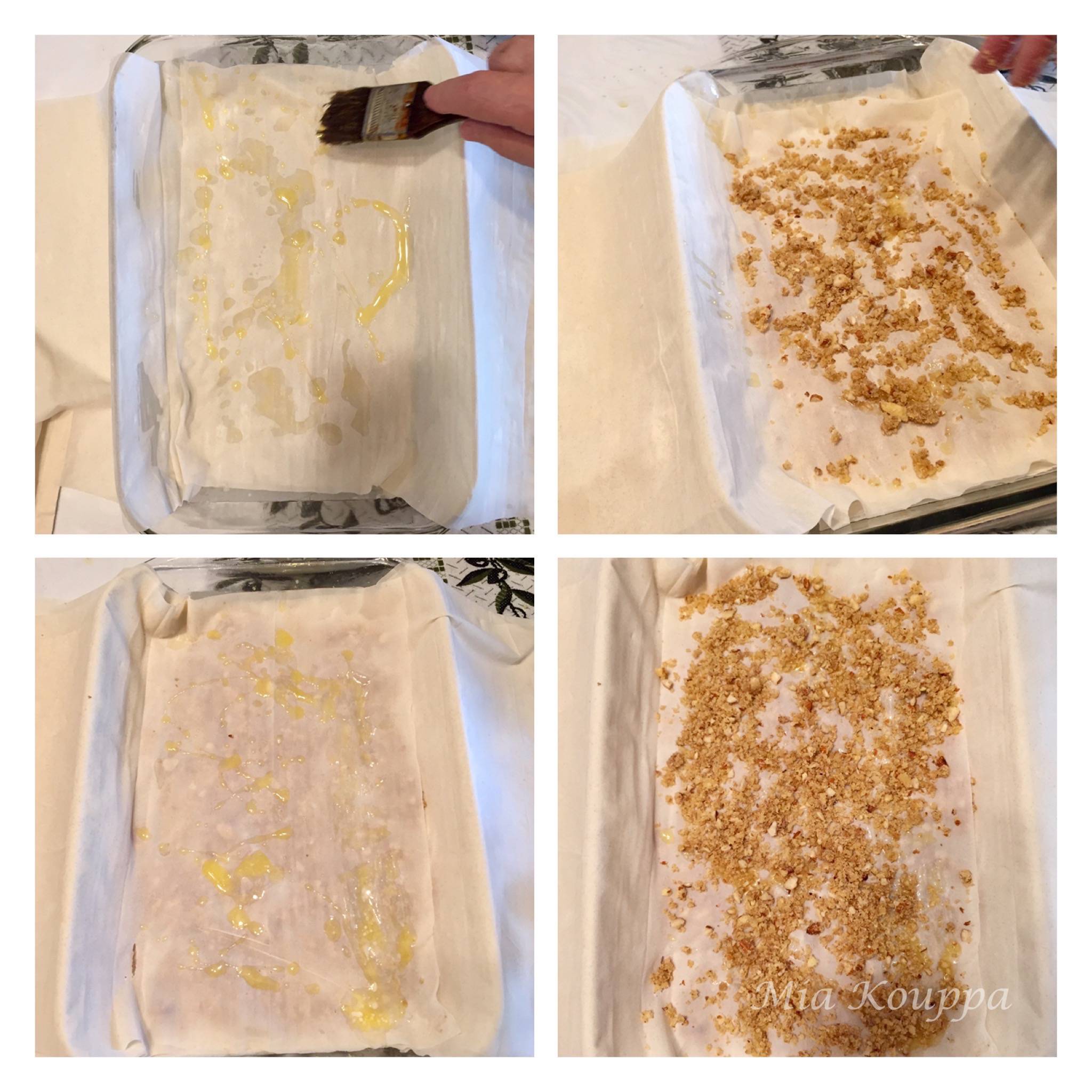
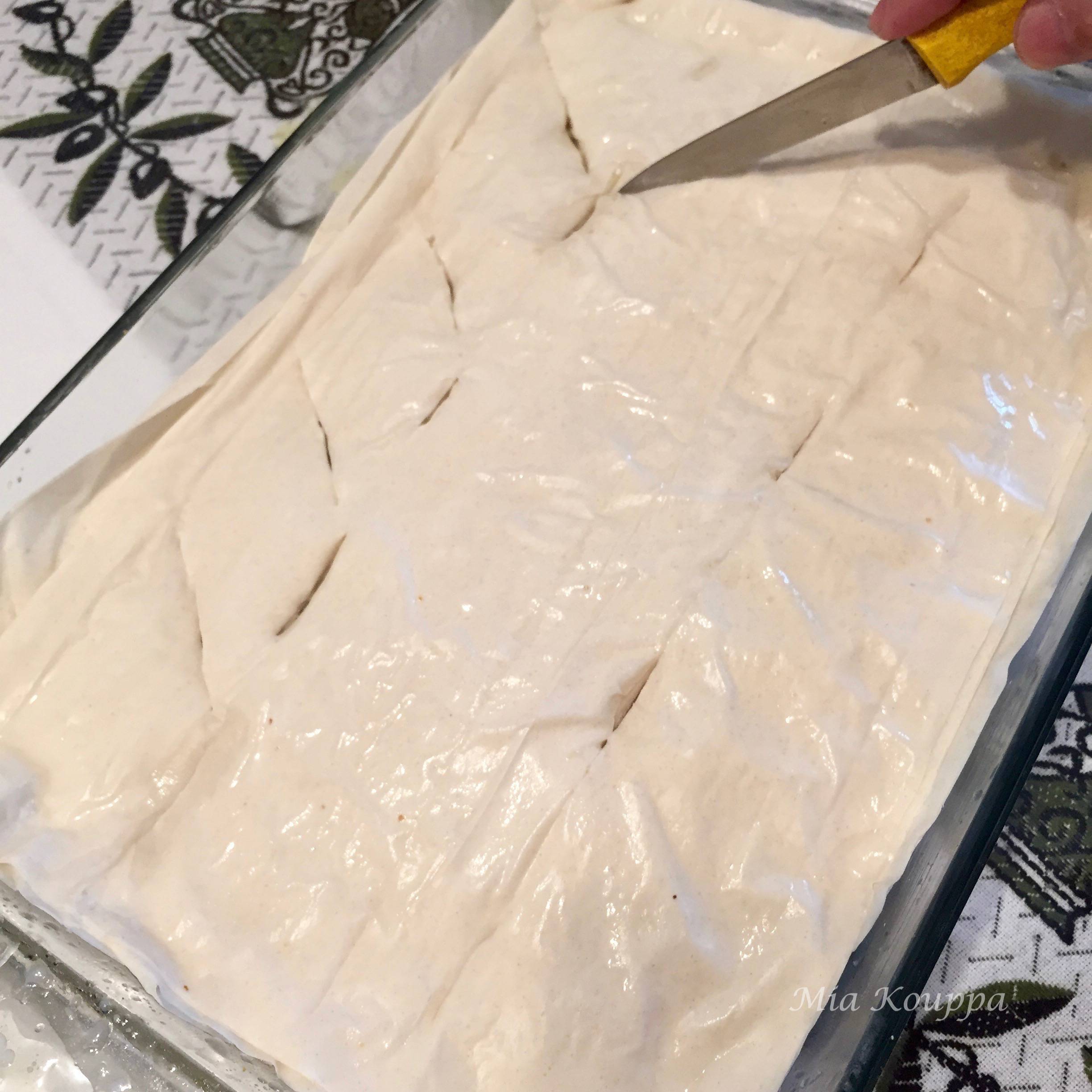
You can find phyllo dough in pretty much any Middle Eastern or Mediterranean grocer, or any well stocked supermarket. It is often available both frozen and fresh. We prefer the fresh variety because we find the frozen phyllo sometimes gets a bit soggy after it has thawed. If the frozen phyllo is all you can find however, go for it! (You may remark that these phyllo paragraphs appear familiar…that’s because they were copied and pasted from our galaktoboureko recipe 🙂 Why reinvent the wheel, right?)
Our parents use primarily walnuts, along with some almonds, in their baklava. We think that this combination is simply perfect. Instead of buying already chopped nuts, we suggest that you do the chopping yourselves. We place walnut halves and whole almonds in a food processor and grind them until they reach a consistency where you have finely ground nuts mixed in with some larger, coarser pieces. This allows you to have the texture of the finely ground nuts, while at the same time giving your baklava some body and bite. We highly recommend you do it this way too. If you don’t have a food processor, you can use a knife to chop up your nuts. We have also used a slap chop, which was once gifted to one of our daughters (when she was six…don’t ask). It requires a little more muscle, but works like a charm.
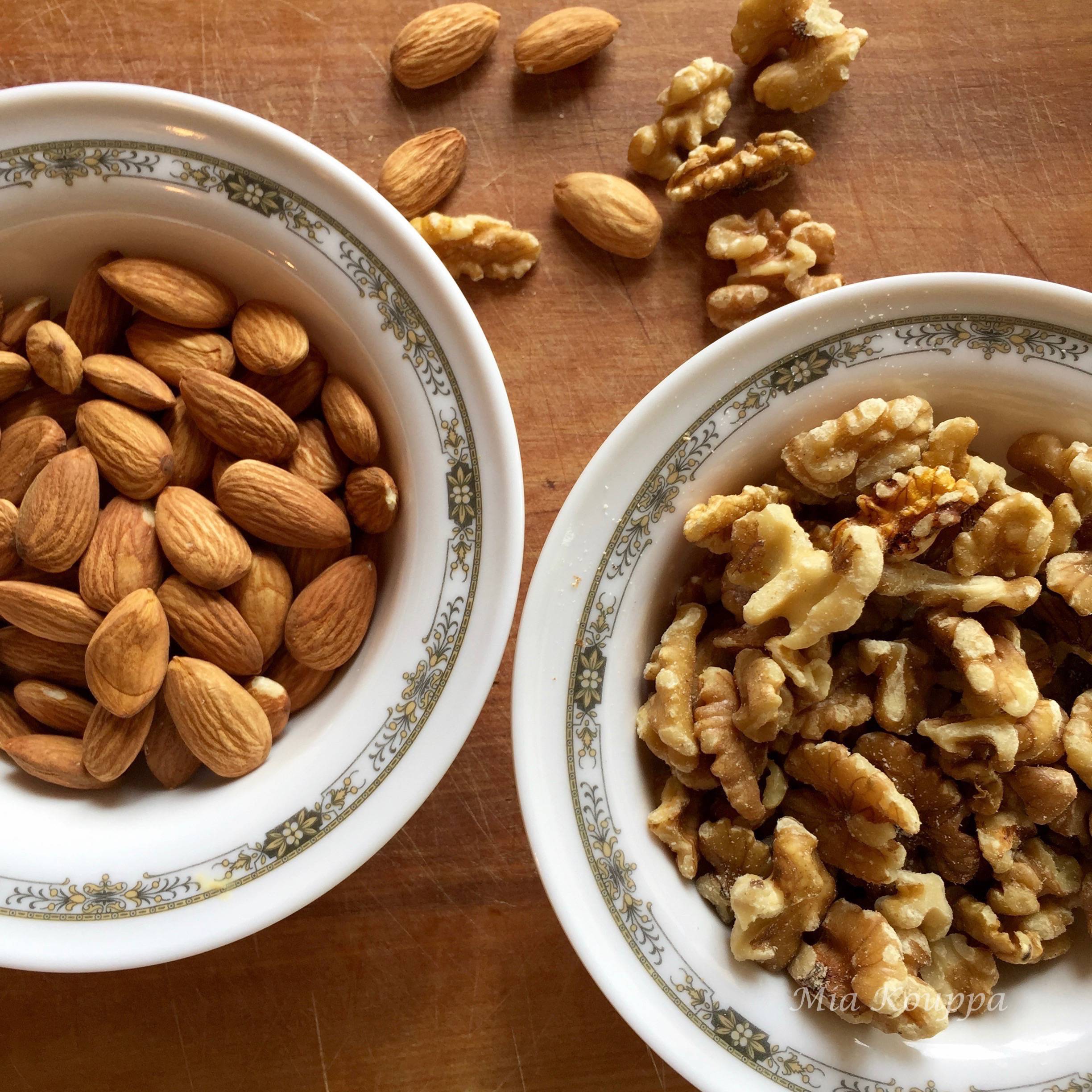
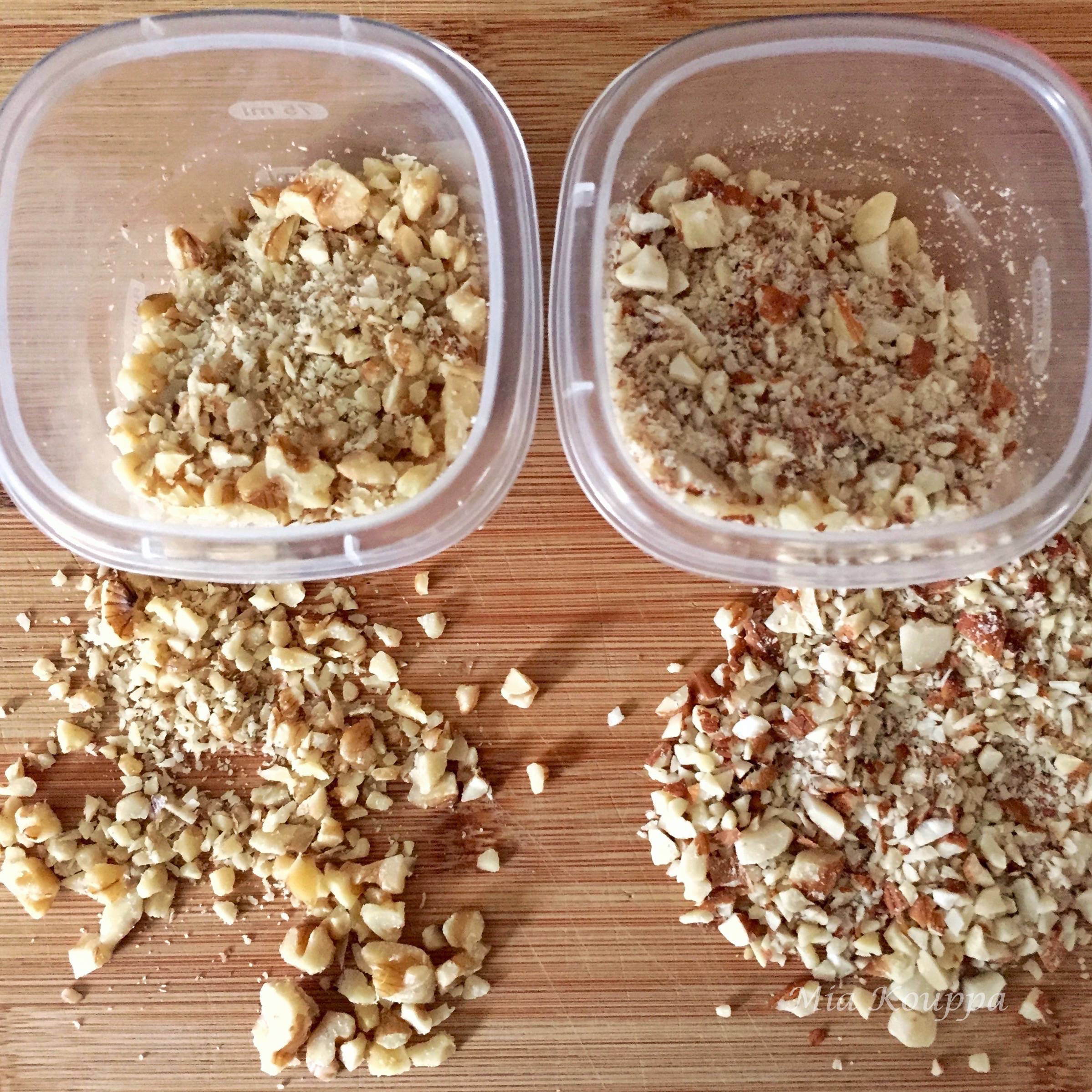
Unusually (we think), our parents add finely ground, plain breadcrumbs to their nut mixture. When asked why, they explain that the breadcrumbs help to hold in, and evenly distribute, the butter which is also added to the nuts. The breadcrumbs also, they claim, aid in soaking in and suspending the syrup. Huh? Really? If we asked them a year ago, our parents would have explained that they add breadcrumbs….because, they do. (We think that this food blogging thing has gone to their heads). In any case, given that this is truly the best baklava WE have ever had, regardless of the reason, just add the breadcrumbs.
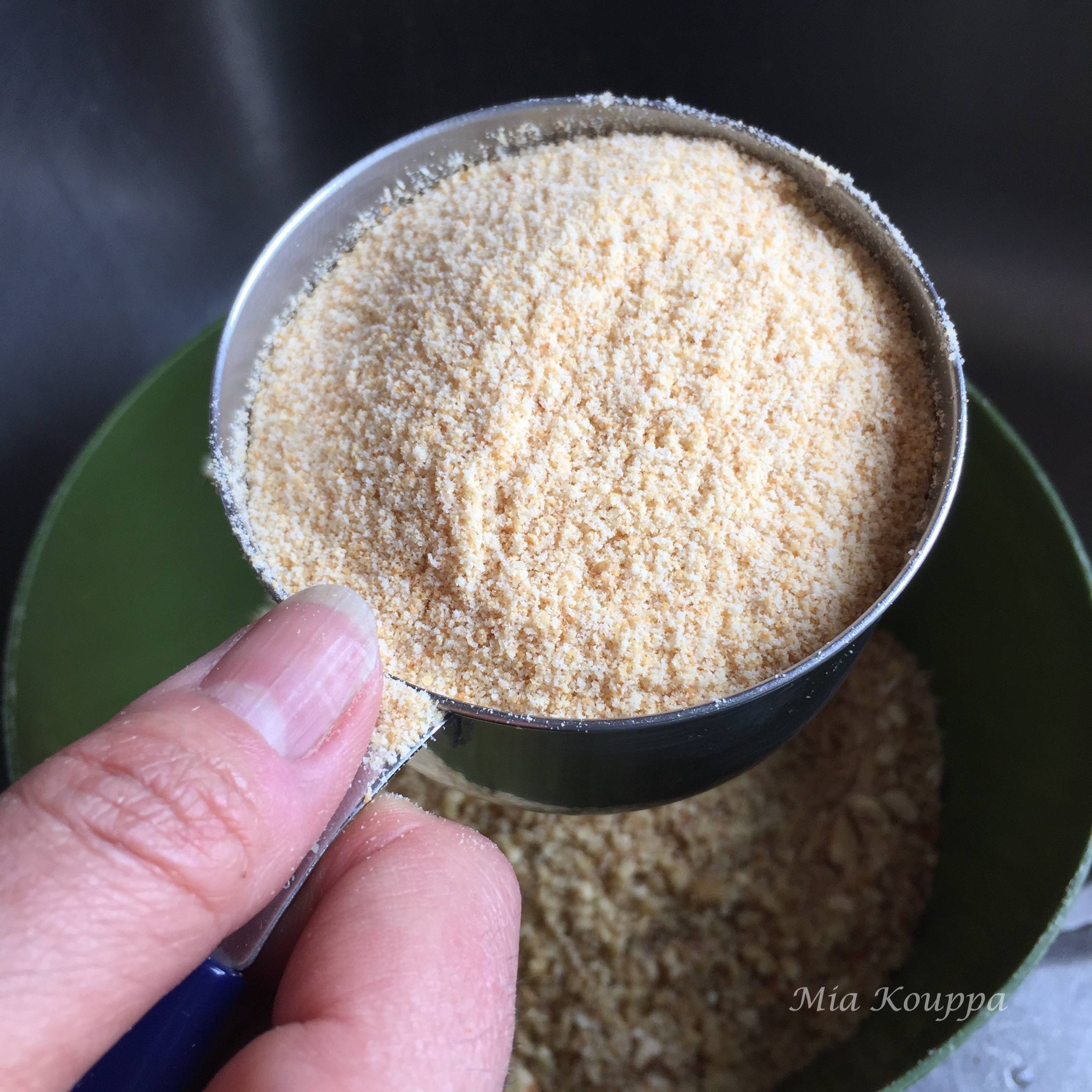
You will notice in the ingredient list below that butter is listed twice. That is not a mistake. It is because you have butter used in two different ways. The first is to mix in with the nuts and breadcrumbs, and the second listing of butter is to brush onto the phyllo dough.
You should be sure that the syrup you will pour onto your hot baklava is cool. Remember: hot baklava + cool syrup. This will keep you phyllo dough from getting soggy. And speaking of soggy phyllo, the best way to prevent this from happening is to keep your baklava at room temperature, and to cover it with a clean tea towel or piece of cheesecloth after it is completely cooled. It can remain this way for several days (if your baklava lasts that long), and your phyllo will be just as great as the day you baked your baklava.
Looking for more sweet things? Try these:
Galaktoboureko
Apple baklava
Tiganites
Pin it if you like it
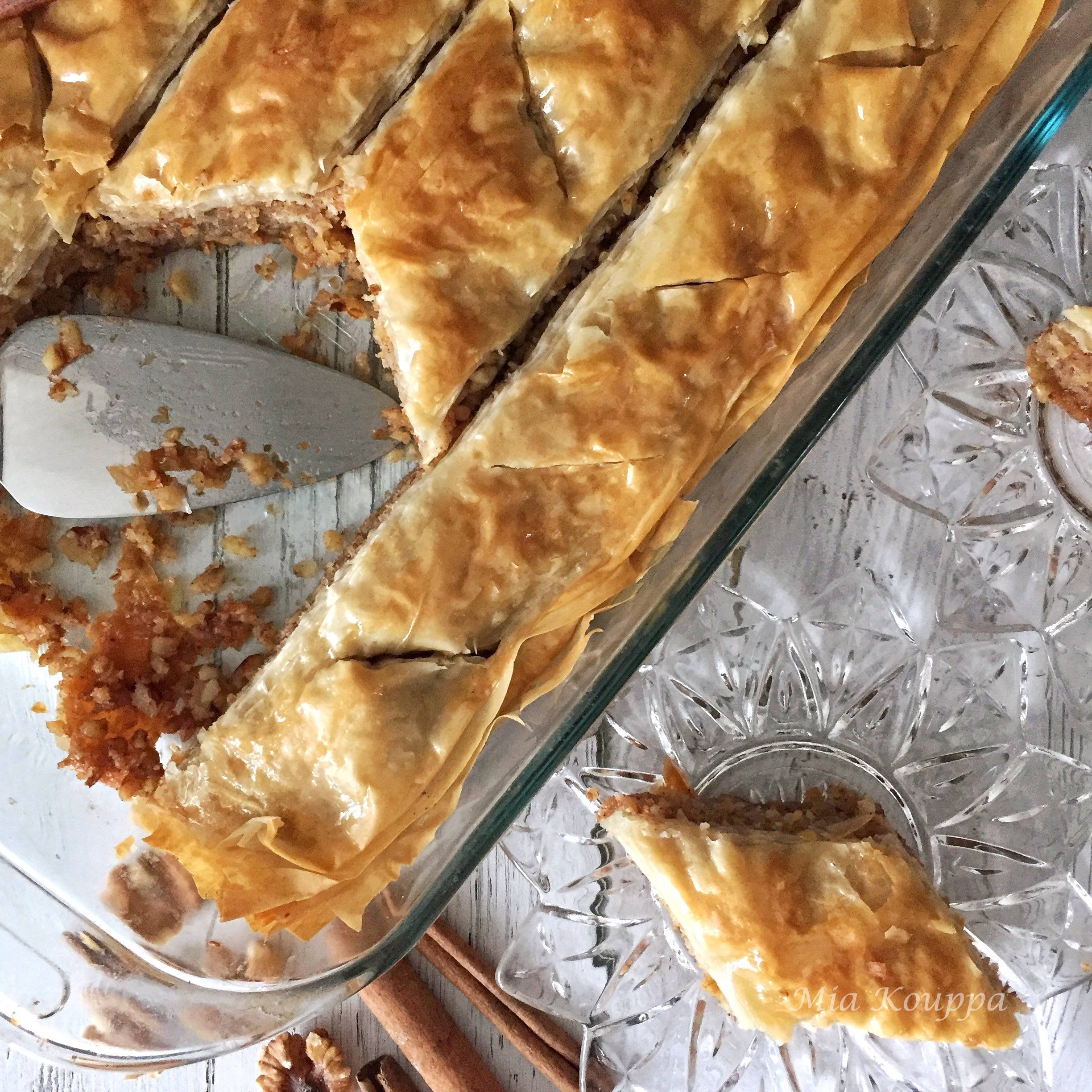


This looks delicious!
Thank you so much. It’s delicious…and easy! 🙂
I’ve always wanted to try it!
Please do! And let us know how you like it 🙂 I promise…it is very easy! (and delicious 🙂 )
I will! My husband loves sweet treats and I love trying new recipes so it works out great lol!
Love baklava. Except for honey cake it’s the only way I like honey.. (Sorry Pooh bear). Thanks for the recipe and for the pep talk on phylo.
You are so welcome 🙂 And I agree…honey cake is divine 🙂 I’m glad you appreciated the phyllo pep talk!! 🙂
I can smell it in the pictures. Lovely post. Very tempted to give it a go now.
Thank you 🙂 I hope you do give it a try! It’s simple and quite yummy !
Looks amazing, love Baklava 🙂
Thank you 🙂 It is one of our favourite desserts!
[…] chips; there is really nothing which does not taste better with tzatziki…except maybe baklava…that might be […]
[…] time to cook up a storm, and especially to bake traditional Greek desserts like galaktoboureko and baklava. Sometimes however, especially when it was hot out and turning on the oven would have meant a […]
[…] our home, desserts like baklava and galaktoboureko were not staples after every dinner, but fruit certainly was. Even when we were […]
[…] cheesecake wasn’t there, we mourned its absence; like literally, we would cry. There was no baklava in the world that could appease us. Luckily, it was rare that Θεία Βούλα would […]
[…] with galaktoboureko and baklava, when you are going to pour syrup over a baked dessert, a good rule of thumb is to have one of the […]
[…] in your refrigerator. That way you can have supper on the table quickly, leaving more time for dessert and coffee. In a pinch, you can always substitute canned beans; keep in mind that you will need […]
[…] via Baklava (Μπακλαβάς) — Taking the guesswork out of Greek cooking…one cup at a time […]
[…] was during the week. Some tzatziki and taramosalata, dolmades, spanakopita, olives and maybe a baklava were standard fare. Add some bread and cheese, and the table was complete. On other occasions […]
[…] When it was finally time for coffee and cake, we of course expected her cheesecake, maybe some baklava and likely a galaktoboureko or two. What we didn’t expect was a platter piled high with […]
[…] to a dinner party or gathering. Usually they would make and bring along their own galaktoboureko, baklava or melomakarona, but occasionally our parents would be too busy (because they were also bringing […]
[…] This delightful dish, which we are affectionately referring to as spanakopasta is the perfect way to enjoy many of the flavours of spanakopita, at times when phyllo is scarce. An incredibly flavourful meal in its own right, you may find yourself making spanakopasta even as you have piles and piles of phyllo in your kitchen. It’s that good! Never fear of course, you can put that phyllo to sweet use by baking up a galaktoboureko or some baklava. […]
[…] to help! And to remind you that we have a whole category of dessert recipes like galaktoboureko, baklava and koulourakia, because cutting out all sweets is dumb (unless your doctor tells you to cut out […]
[…] probably never describe themselves as bakers, and in fact, most Greek desserts like galaktoboureko, baklava and bougatsa are not baked in the cake-type of baking we usually think of. There is no sticking a […]
Leave a Reply